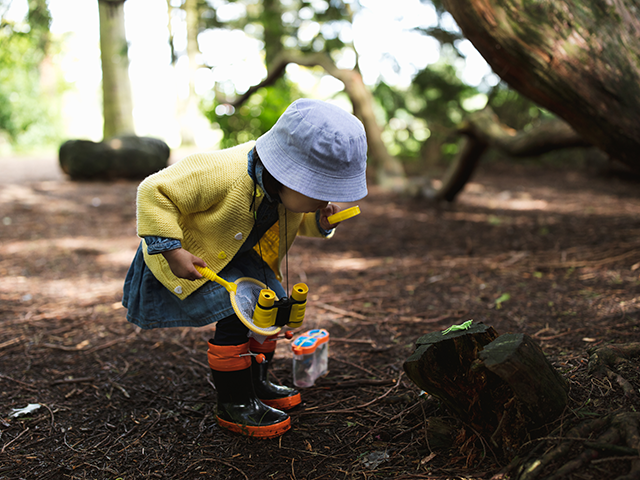Tthe CDC reports drowning is the leading injury cause of death for children aged one to four. When you get ready to swim – in the backyard or a public space – here are a few things you can do to ensure your family stays safe.
The American Academy of Dermatology states that skin cancer is the number one diagnosed form of cancer.
The CDC reports 200,000 children a year are seen in emergency departments due to injuries at playgrounds.
Stay in the know about outdoor critters who can potentially disrupt your outside time – think West Nile, Lyme, or Zika Virus to name a few.



These workshops serve as educational platforms to learn about various safety measures. For instance, a first aid workshop might teach attendees how to perform CPR, treat minor wounds, or what to do in case of choking.
Fire safety workshops would teach about using fire extinguishers, responding during a fire breakout, and evacuation methods. Cyber safety sessions, on the other hand, would educate about safeguarding online data, recognizing phishing attempts, and ensuring secure online transactions.
Such contests are a creative means to embed safety consciousness in people, especially young minds. Schools and offices can be urged to participate, where individuals or teams create posters emphasizing different safety messages.
These visual representations not only engage the creators but, when displayed strategically, can serve as constant reminders for the larger community about safety norms. The act of competition also often galvanizes more enthusiastic participation.
These are live, interactive sessions where professionals from fire departments, police forces, or EMT units showcase real-life safety procedures. Witnessing the “Jaws of Life” in action can give people an appreciation for the challenges faced during car rescue operations. Similarly, observing a CPR demonstration can emphasize its life-saving potential and inspire more individuals to learn the technique.
By collaborating with local businesses to offer discounts on safety gear, communities can encourage more people to invest in safety tools and equipment. A reduced price on helmets might motivate cyclists to wear them regularly. Affordable fire extinguishers can increase the number of households that own and know how to use them. This initiative makes safety more accessible to everyone.
A child’s safety is every parent’s top concern. Hosting events where parents can assemble ID kits for their children provides an added layer of security. These kits typically include vital information like the child’s fingerprints, a current photograph, physical descriptors, and sometimes even DNA samples.
In unfortunate events where a child goes missing, these kits can be instrumental for law enforcement agencies in their search efforts.
An amalgamation of various safety themes, a community safety fair is a one-stop destination for safety education. Booths can be set up with themes ranging from home safety, which might provide tips on preventing domestic accidents, to car safety, offering insights into safe driving practices and the importance of child safety seats. Such fairs centralize a wealth of information and create a sense of community bonding over shared concerns.
Preparedness is a key component of safety. People can practice responding in emergencies by organizing drills in varied settings like offices, schools, or public spaces. A fire drill, for instance, helps building occupants familiarize themselves with evacuation routes.
Earthquake drills educate people on the “Drop, Cover, and Hold On” method. Regularly practicing these measures reduces panic if and when such events occur, and individuals are better equipped to protect themselves and others.
Introducing a safety checklist for homes and offices can be a tangible reminder of important safety precautions. Individuals can assess their environment’s safety by releasing a comprehensive list of measures—from ensuring the correct storage of cleaning chemicals to checking the functionality of smoke detectors.
Encouraging people to actively check off items provides a sense of accomplishment and instills a proactive approach to safety. As participants work through the list over the month, they gradually build safer surroundings for themselves and others.
With the pervasive nature of the internet and the increasing threats in the digital realm, digital safety has become paramount. Workshops on this topic could focus on imparting skills for safe browsing habits, emphasizing the need to regularly update and diversify passwords, and educating attendees about the dangers of phishing scams.
Highlighting real-life scenarios where people have faced cyber threats can effectively underline the importance of such safety practices.
The significance of PPE became especially evident during health crises like the COVID-19 pandemic. Organizing donation drives can ensure that essential protective gear like masks, gloves, and goggles are available for everyone, particularly for those who might not have the means to procure them. Such initiatives showcase community solidarity, ensuring everyone can access basic safety equipment.
Vehicles, if not properly maintained, can become potential hazards. Collaborating with local mechanics or car service centers to provide either discounted or complimentary safety checks ensures that more people can have their vehicles assessed for any issues. From checking brakes to ensuring all lights are functional, such checks can prevent potential accidents, promoting safer roads for everyone.
Motivating individuals, especially the younger generation, to commit to online safety can be effective through pledges. By taking a public oath—possibly shared on social media platforms—people make a personal commitment and raise awareness amongst peers. Such pledges can cover aspects like not sharing personal information online, being cautious of unverified sources, and promoting respectful online interactions.
Safety often begins with preparedness. DIY sessions that guide participants in assembling their safety kits can be invaluable. These kits might include essentials like bandages, antiseptics for first aid, a list of emergency contacts, and even basic tools like flashlights. Such gatherings not only teach individuals about the essentials of safety preparedness but also promote the idea of self-reliance during emergencies.
Narratives are powerful tools for education and inspiration. By creating platforms—online forums, community gatherings, or even podcast series—where individuals narrate their real-life incidents, emphasizing the value of safety measures, others can learn and be inspired.
These stories range from incidents where a seatbelt prevented major injuries to tales where cybersecurity measures thwarted potential threats. Personal anecdotes bring a human touch to safety guidelines, making them more relatable and memorable.
While fostering physical health and team spirit, sports can cause injuries if safety isn’t prioritized. Organizing sessions emphasizing the critical role of safety gear in sports, from shin guards in soccer to helmets in cricket, can prevent potential injuries.
Moreover, these sessions can teach proper playing techniques to reduce injury risks. Additionally, amateur, and professional athletes should be made aware of the importance of regular health check-ups to ensure they can participate.
As the population ages, the unique safety needs of the elderly become even more pressing. Workshops tailored for this demographic can offer insights into fall prevention, a leading cause of injuries in older adults.
The correct administration and storage of medications, the risk of drug interactions, and the importance of regular vision and hearing checks can also be discussed. Such workshops can empower the elderly to maintain independence while ensuring their well-being.
The workplace has safety challenges, whether an office or a construction site. Inviting experts to deliver seminars on various aspects can be invaluable. Topics can range from ergonomics, ensuring that workspaces are designed to minimize strain and injuries, to mental health awareness, highlighting the importance of recognizing signs of burnout, and offering coping strategies.
Stress management techniques, often overlooked, are crucial in today’s high-pressure work environments and can be integral to such seminars.
Pets are cherished members of many families, and their safety is paramount. Sessions on pet safety can educate pet owners on various aspects, such as the significance of identification tags to ensure lost pets can be returned, the best practices for safely transporting pets in vehicles, and recognizing and avoiding foods and plants that are toxic to certain animals. Such knowledge can prevent inadvertent harm and ensure our furry friends live long healthy lives.
Cycling, both as a sport and a mode of transportation, has seen a resurgence. Organizing community bike rides that focus on safety can serve multiple purposes. It can promote the activity while emphasizing the non-negotiables of bike safety, like wearing helmets, using signals when turning, and ensuring bikes have proper reflectors and lights. Such rallies can be both educational and recreational, fostering community spirit.
A safety mascot can add a touch of fun and engagement to the serious safety topic. Whether it’s a character in a reflective vest or a talking helmet, mascots can appeal especially to younger audiences. The mascot can interactively teach children and adults about safety tips by visiting schools, parks, or public events, making the learning experience memorable.
The digital age offers unique platforms for education. Safety quizzes on social media can engage a wide audience, testing their knowledge on various safety topics. These quizzes can be informative and challenging, and participation can be encouraged by rewarding winners with safety gear or other incentives. The interactive nature of quizzes, combined with the potential to be shared widely, makes them a potent tool for safety awareness.
Just in Time Training is a web based service program designed to connect foster parents, kinship or other caregivers with training, peer experts and other resources. Questions are answered and practical solutions to care for children are discussed - all from the comfort of your home or office.
If you have difficulty accessing any material on this site, please contact us in writing and we will work with you to make the information available. You can direct your request to JITSupport@USF.edu.